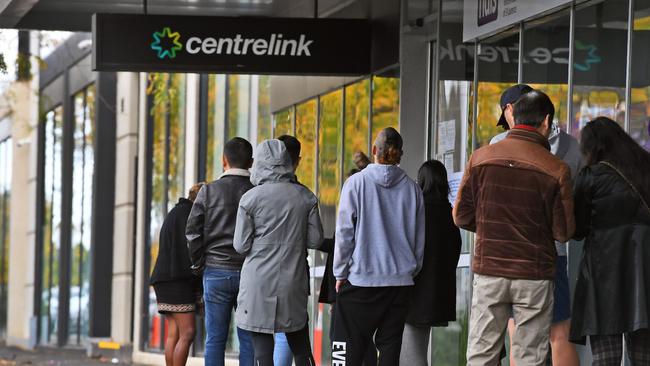JobKeeper: NSW suburbs most dependent on COVID payment
Households on the outskirts of Greater Sydney are feeling the brunt of the COVID-19 Pandemic more than their inner-city neighbours. SEE THE LIST OF OUR WORST HIT SUBURBS HERE.
Blacktown
Don't miss out on the headlines from Blacktown. Followed categories will be added to My News.
It is a tale of two cities when it comes to the financial impact COVID-19 is having on households, and those who are lining up to get their share of vital government subsidies.
Sydney’s most prestigious postcodes lining the Northern Beaches and Eastern Suburbs have been revealed as some of those with the highest JobKeeper reliance across the state, as rolling data revealed the suburbs under the most financial strain from the pandemic.
TOP TEN SYDNEY SUBURBS FINANCIALLY IMPACTED BY THE PANDEMIC
2752, Warragamba - Silverdale
2759, St Clair
2015, Erskineville - Alexandria
2756, Windsor - Bligh Park
2557, Cobbitty - Leppington
2230, Cronulla - Kurnell - Bundeena
2745, Glenmore Park - Regentville
2749, Castlereagh - Cranebrook
2558, Claymore - Eagle Vale - Raby
2747, Kingswood - Werrington
The latest national analysis by Taylor Fry, obtained by NewsLocal, can reveal the NSW postcodes with the most significant reliance on the Federal Government’s temporary payment scheme.

Taylor Fry principal, Alan Greenfield told NewsLocal the geographical breakdown of JobKeeper reliance across the country revealed metropolitan areas are “generally more reliant on the payments than regional areas”, with the exception of tourist destinations.

“There are two overarching drivers of JobKeeper reliance for a local area,” he said.
“Firstly, locations with a larger percentage of residents in the workforce (not unemployed or retired) are more exposed to the financial consequences of the pandemic and therefore more likely to end up being reliant on JobKeeper.
“Secondly, some industries of employment are just more likely to qualify for the scheme — this is important because employees can only get JobKeeper if their employer qualifies for the scheme, and that requires their employer to have lost a substantial share of their revenue. Typically, this has affected middle income earners in occupations such as retail, hospitality, construction and accommodation.”
Suburbs on Sydney’s Northern Beaches including Frenchs Forest, Belrose, Mona Vale, Narrabeen, Dee Why, Freshwater and Brookvale top the JobKeeper reliance list, while residents in North Bondi, Botany, St Peters and Alexandria also heavily on the government subsidy in the city’s east.
In the northwest, exclusive suburbs like Dural, Kenthurst and Kellyville, as well as the upper north shore’s Asquith, Mt Colah and Berowra also have massive numbers of residents receiving the government handout.
Meanwhile, western Sydney suburbs like Glenmore Park, Mulgoa, Castlereagh and Camden are included in list of postcodes with the highest proportion of residents receiving the payment.
South Sydney postcodes that make up Engadine, Loftus, Helensburgh and Picton also top the list.

Mr Greenfield said although some of Sydney’s inner-city suburbs have high proportions of residents on JobKeeper, “what is most striking is the ring of middle-income workers living in outer suburbs who are heavily reliant on this support”.
“A concentration of workers in some industries shows up in these regions,” he said.
“It’s clear in southern Sydney, for example, residents have suffered from the enormous impact of the travel restrictions on the aviation industry, (while) in western Sydney, a relatively high proportion of residents are in construction-related fields which have felt the impact of reduced economic activity across Sydney.”
He clarified that although postcodes closer to the Sydney CBD seem to be less reliant on JobKeeper, “it doesn’t mean people living here aren’t feeling the financial impact of the pandemic”.

Outside Greater Sydney, postcodes for regions such as Jindabyne and Berridale — tourism hot spots — also saw a major increase in the number of residents seeking out the government subsidy.
“Regional hubs like Tamworth, Newcastle, Wollongong and Wagga Wagga have large
service industries that get impacted by social distancing more than others”, Mr Greenfield said. “Tourist destinations like Jindabyne, Byron Bay and the Blue Mountains are also feeling the crunch of far fewer local, interstate and international visitors.
“These areas also have a large proportion of their businesses registered for JobKeeper.”
*Taylor Fry is a data analysis company that provides up-to-date, analytical breakdowns of data for commercial businesses and government agencies

